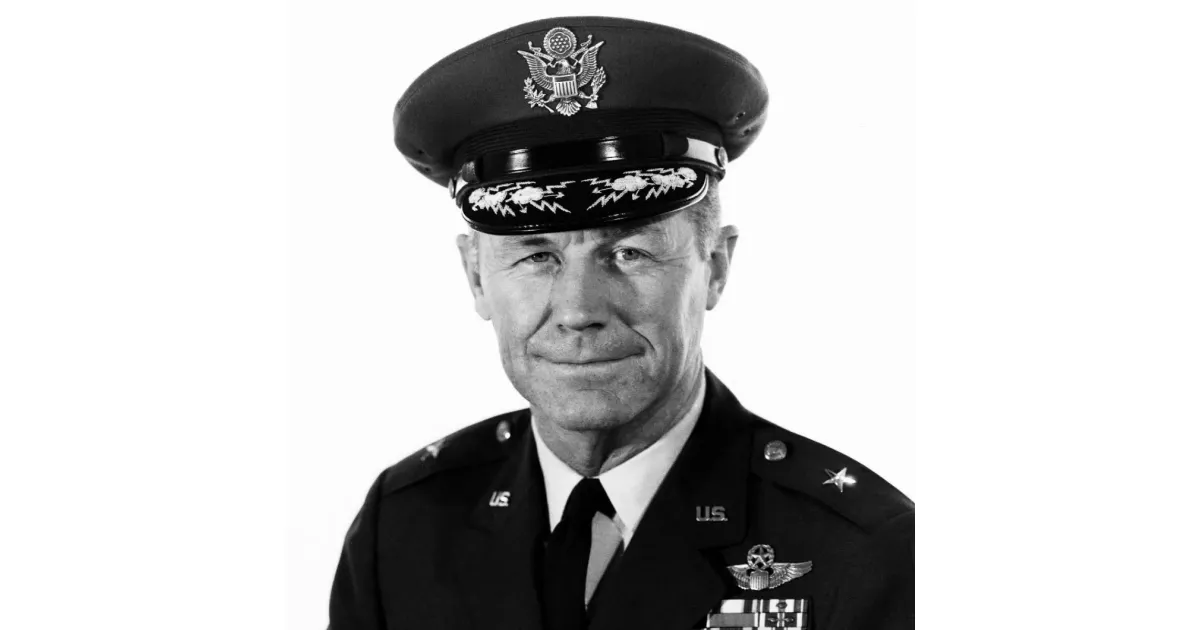Brigadier General Charles Elwood Yeager was a renowned United States Air Force officer and test pilot, celebrated for his groundbreaking achievement in aviation history. In October 1947, Yeager became the first pilot to officially break the sound barrier in level flight, a monumental milestone in aeronautics. His feat was accomplished while piloting the Bell X-1 aircraft, earning him a place in the annals of aviation history as a pioneering figure who pushed the boundaries of flight. Yeager was also recognized as a flying ace, showcasing exceptional skill and courage in his military career. His contributions have had a lasting impact on aviation and have inspired future generations of pilots and engineers.
February 13, 1923: Birth of Chuck Yeager
Chuck Yeager was born on February 13, 1923, in Myra, West Virginia. He grew up in a farming family with his parents Albert and Susie Mae Yeager, having two brothers and two sisters. This date marks the beginning of the life of a man who would later become a celebrated test pilot and flying ace.
June 1941: High School Graduation
Chuck Yeager graduated from Hamlin High School in June 1941. During his high school years, he excelled in sports and academics, particularly in geometry and typing.
September 12, 1941: Enlistment in the U.S. Army Air Forces
Chuck Yeager enlisted as a private in the U.S. Army Air Forces on September 12, 1941. Initially serving as an aircraft mechanic, his sharp vision and skills eventually led him to pilot training.
September 1942: Enlisted Pilot Training
In September 1942, Chuck Yeager entered enlisted pilot training after initially serving as an aircraft mechanic. This marked the beginning of his journey towards becoming a celebrated pilot during World War II.
June 12, 1944: Reinstatement to Combat Flying
On June 12, 1944, Chuck Yeager was reinstated to combat flying by General Dwight D. Eisenhower after initially being barred due to having evaded capture. His determination to return to combat exemplified his courage and dedication during World War II.
October 12, 1944: Ace in a Day
On October 12, 1944, Chuck Yeager achieved 'ace in a day' status by shooting down five enemy aircraft in a single mission during World War II. This remarkable feat highlighted his exceptional skill and bravery as a fighter pilot.
January 15, 1945: Yeager's Final Mission in WWII
On January 15, 1945, Chuck Yeager flew his 61st and final mission of World War II.
February 1945: Yeager's Return to the United States and Test Pilot Beginnings
Chuck Yeager returned to the United States in February 1945 after completing his tour of duty. Due to his wife's pregnancy and his extensive flight experience, he opted to become a test pilot at Wright Field.
February 26, 1945: Marriage to Glennis Dickhouse
On February 26, 1945, Chuck Yeager married Glennis Dickhouse, with whom he had four children. This personal milestone occurred during his military career and partnership with Glennis was a significant aspect of his life.
October 14, 1947: Officially Breaking the Sound Barrier
On October 14, 1947, Chuck Yeager officially broke the sound barrier in the Bell X-1 aircraft, flying at Mach 1. This historic flight earned him both the Collier and Mackay trophies in 1948, cementing his place in aviation history.
October 1947: Breaking the Sound Barrier
In October 1947, Chuck Yeager became the first pilot to exceed the speed of sound in level flight, piloting the Bell X-1. This historic achievement forever changed the landscape of aviation, showcasing Yeager's bravery and skill.
1947: Record-Breaking Flight
In 1947, Yeager made his famous record-breaking flight, which was later depicted in the movie The Right Stuff.
1947: Yeager Selected to Fly the Bell XS-1
In 1947, after Chalmers "Slick" Goodlin's exorbitant demands, 24-year-old Chuck Yeager was selected by the USAAF to pilot the Bell XS-1 to research high-speed flight. This occurred under a NACA program and led to Yeager's involvement in breaking the sound barrier.
June 10, 1948: Public Announcement of Yeager's Supersonic Flight
On June 10, 1948, the public learned that Chuck Yeager had broken the sound barrier on October 14, 1947. This marked a significant milestone in aviation history.
1952: Yeager Attends Air Command and Staff College
In 1952, Chuck Yeager attended the Air Command and Staff College.
November 20, 1953: Navy Team Achieves Mach 2
On November 20, 1953, the U.S. Navy, with pilot Scott Crossfield flying the D-558-II Skyrocket, became the first to reach twice the speed of sound.
December 12, 1953: Yeager Breaks Mach 2 Record
On December 12, 1953, Chuck Yeager and Ridley set a new speed record of Mach 2.44 in the X-1A, surpassing Scott Crossfield's record. This was part of "Operation NACA Weep".
1953: Yeager Flies Chase for Cochran's Supersonic Flight
In 1953, Chuck Yeager served as a chase pilot for Jackie Cochran, who became the first woman to break the sound barrier. Yeager was also involved in work on the X-1A and flew a MiG-15.
1954: Yeager Awarded Distinguished Service Medal
Chuck Yeager was awarded the Distinguished Service Medal (DSM) in 1954 for regaining control of the X-1A after experiencing inertia coupling at Mach 2.44 and 80,000 ft.
1954: Yeager Receives the Harmon International Trophy
Chuck Yeager was awarded the Harmon International Trophy in 1954, recognizing his achievement in breaking the sound barrier.
1957: Yeager Commands 1st Fighter Day Squadron
Chuck Yeager commanded the 1st Fighter Day Squadron at George Air Force Base, California, and Morón Air Base, Spain, from 1957 to 1960.
April 1962: Yeager Flies with Neil Armstrong
In April 1962, Chuck Yeager and Neil Armstrong flew a T-33 to assess Smith Ranch Dry Lake as an emergency landing site for the X-15. Despite Yeager's warning, Armstrong's attempt at a touch-and-go resulted in the plane getting stuck in the mud.
1962: First Commandant of USAF Aerospace Research Pilot School
In 1962, Chuck Yeager became the first commandant of the USAF Aerospace Research Pilot School, where he played a key role in training future astronauts for NASA and the Air Force.
December 1963: Yeager Injured in NF-104 Crash
During a December 1963 test flight in an NF-104, Chuck Yeager was seriously injured after the aircraft entered a flat spin at high altitude. He ejected but suffered burns due to a malfunctioning ejection seat.
January 1964: Yeager's Final Record Attempts
Between December 1963 and January 1964, Chuck Yeager flew the NASA M2-F1 lifting body. The December 1963 NF-104 incident marked the end of his record-setting test flights.
1966: Induction into International Air & Space Hall of Fame
Yeager was inducted into the International Air & Space Hall of Fame in 1966.
February 1968: Yeager Commands 4th Tactical Fighter Wing
In February 1968, Chuck Yeager was assigned command of the 4th Tactical Fighter Wing at Seymour Johnson Air Force Base, North Carolina. He later led the wing in South Korea during the Pueblo crisis.
July 1969: Yeager Promoted to Brigadier General
Chuck Yeager was promoted to brigadier general and became vice-commander of the Seventeenth Air Force in July 1969.
1969: Promotion to Brigadier General
In 1969, Chuck Yeager was promoted to brigadier general in recognition of his leadership and achievements, particularly during his command in Germany and Southeast Asia.
1972: Visit to No. 15 Squadron and K2
In 1972, Yeager visited the No. 15 Squadron "Cobras" and was escorted to K2, the world's second-highest mountain.
1973: Induction into National Aviation Hall of Fame
Yeager was inducted into the National Aviation Hall of Fame in 1973.
1973: End of Assignment in Pakistan
Yeager's assignment as Air Attache in Pakistan concluded in 1973.
1974: Golden Plate Award
In 1974, Yeager received the Golden Plate Award from the American Academy of Achievement.
March 1, 1975: Retirement from Active Duty
Chuck Yeager retired from active duty on March 1, 1975, after a distinguished career spanning over 30 years, including service in World War II, the Korean War, and the Vietnam War.
December 1975: Congressional Silver Medal Award
Yeager was awarded a silver medal by the U.S. Congress in December 1975 for his contributions to aerospace science.
1975: Retirement and Move to Grass Valley
Chuck Yeager retired from the Air Force in 1975 and moved to Grass Valley, California with his wife, Glennis.
December 8, 1976: Silver Medal Presentation
President Gerald Ford presented Yeager with the Congressional silver medal on December 8, 1976.
1981: Induction into International Space Hall of Fame
Yeager was inducted into the International Space Hall of Fame in 1981.
1983: Cameo in The Right Stuff
Yeager made a cameo appearance as a bartender in the 1983 film The Right Stuff, which depicted his historic flight.
October 1985: Publication of Incident Recounting in Washington Monthly
In October 1985, the Washington Monthly published an account of an incident involving the destruction of Yeager's Beechcraft during an Indian air raid.
1986: Indianapolis 500 Pace Car Driver and Rogers Commission Appointment
In 1986, Yeager drove the pace car for the Indianapolis 500 and was appointed to the Rogers Commission, which investigated the Challenger explosion.
1987: Release of Chuck Yeager's Advanced Flight Trainer
Chuck Yeager's Advanced Flight Trainer, a popular flight simulator video game featuring Yeager's expertise, was released in 1987.
1988: Support for George H.W. Bush Campaign
Chuck Yeager appeared in a Texas advertisement supporting George H. W. Bush's 1988 presidential campaign.
1988: Indianapolis 500 Pace Car Driver
Yeager drove the pace car for the Indianapolis 500 again in 1988.
1990: Death of Glennis Yeager
Chuck Yeager's wife, Glennis Yeager, died of ovarian cancer in 1990.
1990: Induction into Aerospace Walk of Honor
Yeager was inducted into the Aerospace Walk of Honor in 1990.
1994: Chairman of EAA's Young Eagle Program
Yeager became chairman of the Experimental Aircraft Association's Young Eagle Program in 1994.
October 14, 1997: 50th Anniversary Supersonic Flight and Tony Jannus Award
On October 14, 1997, Yeager commemorated the 50th anniversary of his supersonic flight by flying past Mach 1 again and receiving the Tony Jannus Award.
2000: Meeting Victoria Scott D'Angelo
Chuck Yeager met Victoria Scott D'Angelo, his future wife, while hiking in Nevada County in 2000.
2001: Archival Footage in Star Trek: Enterprise Opening Sequence
In 2001, archival footage of Yeager was included in the opening sequence of the Star Trek: Enterprise series.
August 2003: Marriage to Victoria Scott D'Angelo
Chuck Yeager married actress Victoria Scott D'Angelo in August 2003. This marriage led to disputes and legal battles with his children over his fortune.
2003: Ranking as Fifth Greatest Pilot
Air & Space/Smithsonian magazine ranked Yeager the fifth greatest pilot of all time in 2003.
2004: Named Chairman Emeritus of Young Eagle Program
In 2004, Yeager was named chairman emeritus of the EAA's Young Eagle Program.
2005: End of Star Trek: Enterprise Series
Star Trek: Enterprise, which featured Yeager in its opening sequence, ended its run in 2005.
October 19, 2006: West Virginia Honors and Highway Dedication
On October 19, 2006, West Virginia honored Yeager with a marker and renamed a portion of U.S. Highway 119 as the Yeager Highway.
August 2008: Legal Victory Against Daughter
In August 2008, Chuck Yeager won a court case against his daughter, Susan, who was accused of breaching her duty as trustee.
August 25, 2009: California Hall of Fame Inductee Announcement
On August 25, 2009, Chuck Yeager was announced as one of the 13 inductees into the California Hall of Fame by Governor Arnold Schwarzenegger and Maria Shriver.
December 1, 2009: California Hall of Fame Induction
Chuck Yeager was inducted into the California Hall of Fame on December 1, 2009, in Sacramento, California.
2009: Participation in "The Legend of Pancho Barnes" Documentary
In 2009, Yeager participated in the Emmy Award-winning documentary "The Legend of Pancho Barnes and the Happy Bottom Riding Club."
March 26, 2011: Death of Son Mickey
On March 26, 2011, Chuck Yeager's son, Michael "Mickey" Yeager, passed away unexpectedly in Oregon.
October 14, 2012: 65th Anniversary Supersonic Flight
On October 14, 2012, at 89 years old, Yeager flew past the sound barrier once again as a co-pilot in an F-15 Eagle.
2013: Ranked Among Aviation Heroes
In 2013, Chuck Yeager was ranked fifth on Flying's list of the 51 Heroes of Aviation, acknowledging his remarkable contributions to aviation history and his status as one of the greatest pilots.
2019: Documentary on Yeager's Controversial Behavior
The 2019 documentary series "Chasing the Moon" includes claims about Chuck Yeager's discriminatory behavior towards Ed Dwight, the first African American pilot in the astronaut training program.
December 7, 2020: Death of Chuck Yeager
On December 7, 2020, Chuck Yeager passed away, marking the end of a legendary career as a test pilot and flying ace. His death closed a historic chapter in aviation history, leaving behind a legacy of achievements and contributions to flight.
Mentioned in this timeline
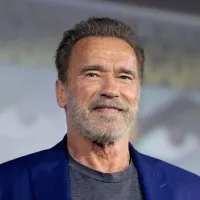
Arnold Schwarzenegger is an Austrian-American actor businessman former politician and...
California is a U S state on the Pacific Coast...
India officially the Republic of India is a South Asian...
NASA the National Aeronautics and Space Administration is an independent...
Germany officially the Federal Republic of Germany is a Western...
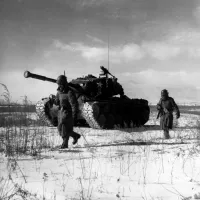
The Korean War - was a conflict between North Korea...
Trending
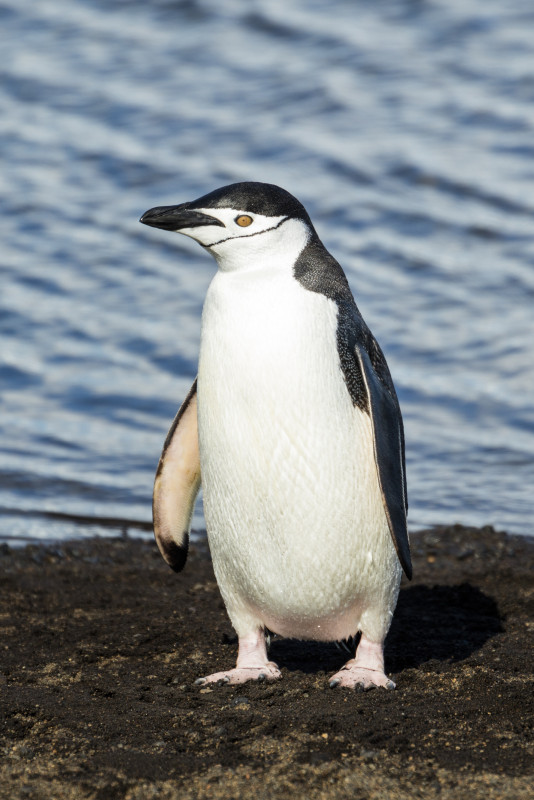
Penguins are flightless semi-aquatic seabirds almost exclusively inhabiting the Southern Hemisphere with the exception of the Gal pagos penguin Adapted...

Johnny Weir is an American retired figure skater and television commentator He is a two-time Olympian and achieved significant success...

8 months ago Dating Rumors Swirl Around Angel Reese and Wendell Carter Jr.; Harvard's Interest
7 months ago JuJu Watkins Recruiting Impact: Byles Visits USC, Watkins' GOAT Choice Revealed.

7 months ago Paolo Banchero's NBA Journey: Overcoming Injury, Praising Teammates, and Hope for the Future

11 days ago Josh Hart shines with increased workload, making a case to stay in lineup.
Popular

Candace Owens is an American conservative political commentator and author...

Ilhan Omar is an American politician currently serving as the...

XXXTentacion born Jahseh Dwayne Ricardo Onfroy was a controversial yet...
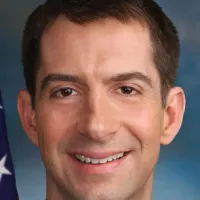
Tom Cotton is an American politician and Army veteran currently...
The Kennedy Center Honors are annual awards recognizing individuals and...
Matt and Ross Duffer known as the Duffer Brothers are...
